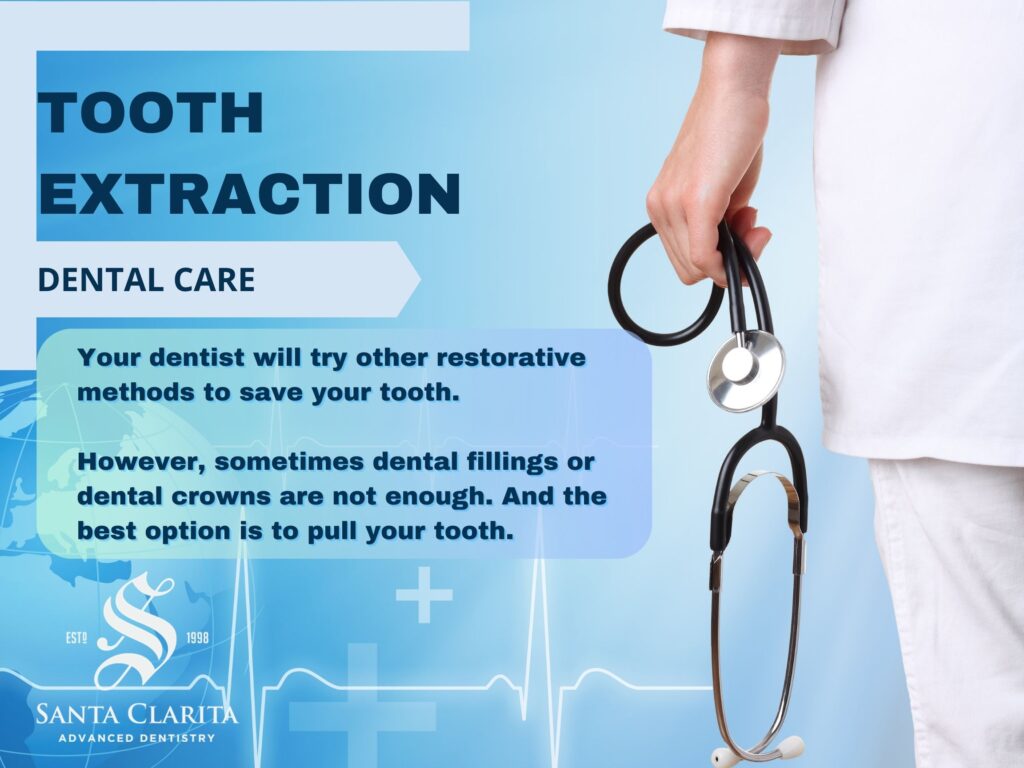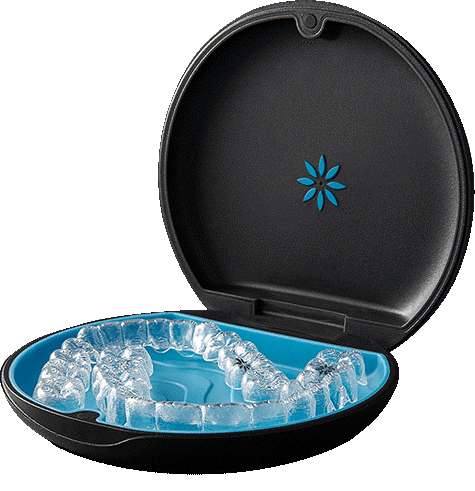Tooth Extraction: A Comprehensive Guide
What is A Tooth Extraction:
As the name suggests, a tooth extraction is the complete removal of a tooth from it’s socket. But when is a tooth extraction needed? Who performs an extraction? What happens during the procedure and what’s the recovery time?
We’ll answer all those these questions in detail in our article.
When is A Tooth Extraction Recommended?
First, you should know that a dentist will try to do everything to save the a tooth. Tooth extractions are not the first answer, it is a last resort. However, other restorative methods like dental fillings or dental crowns may not be enough to save a tooth. It is in cases like these when your dentist may suggest a tooth extraction.
Tooth extraction may be performed due to:
- Severe tooth decay (cavities)
- Tooth fracture
- Impacted tooth
- Crowded teeth
- Advanced gum disease
- Dental injuries such as luxation
Understanding the Tooth Extraction Procedure:
To begin, your dentist will assess the affected tooth and surrounding gums before the tooth extraction. Usually, aided by dental X-rays to evaluate bone levels and damage extent. Next, various sedation options are available to ensure patient comfort during the procedure:
- Nitrous oxide – Known as “laughing gas,” nitrous oxide is a gas that you inhale through a mask or nosepiece.
- Oral conscious sedation – This type of sedation is given by mouth, usually in pill form, about an hour before your dental appointment. Common medications used for this purpose include diazepam, midazolam, triazolam and lorazepam.
- Intravenous (IV) sedation – This is recommended for people with significant dental anxiety or for those undergoing lengthy procedures. Sedative and pain medications — such as midazolam and meperidine — are delivered directly to your bloodstream using an IV line.
In complex cases, general anesthesia in a hospital setting might be recommended.
Next, during the extraction, local anesthesia is administered to numb the tooth and surrounding tissue. After, the dentist delicately loosens the tooth using specialized instruments, sometimes requiring incisions in the gums for better access. Post-extraction, the socket is cleaned, disinfected, and may receive a dental bone graft to prevent jawbone loss.
Who Performs A Tooth Extraction?:
Normally, most dentists and specialists are qualified to perform a tooth extraction. However, if the extraction is more complex you will have to see a dental surgeon or periodontist. Your dentist will let know if they can perform the procedure or if you need to see another specialist.
Aftercare and Recovery:
How long does it take to recover? It depends on the severity of your tooth extraction. However, most people resume to their regular routines after about 48 -72 hours. Also, it normally takes the jawbone several weeks to heal completely.
Therefore, if you’re considering replacing your tooth with a dental implant, you may need to wait a few months for a complete recovery.
After the procedure, patients are advised to:
- Keep the extraction site clean by rinsing with antimicrobial mouthwash.
- Take prescribed medications as directed, including antibiotics and pain relievers.
- Avoid strenuous activities for at least two days.
- Consume soft foods to prevent disruption of the healing process.
- Return to work or school within a day or two for most cases.
Advantages of Tooth Extractions:
As mentioned above, this may be to last resort to addressing a tooth problem. First, the main advantage is that it reduces harmful bacteria that can damage teeth and gums. Further, a patient can experience ease of dental pain almost immediately if the tooth was broken or infected.
When to Seek Medical Attention:
Patients should contact their dentist if they experience:
- Fever above 100.4 degrees Fahrenheit (38 degrees Celsius)
- Drainage (pus) around the extraction site
- Severe, unrelenting pain post-extraction
To contact Santa Clarita Advanced Dentistry, click here.
Conclusion:
While an extraction may seem daunting, it often serves as a crucial step toward maintaining oral health and alleviating discomfort caused by severe dental issues. Discussing potential replacement options like dental implants or bridges with your dentist ensures comprehensive care and restoration of function and aesthetics. Always follow post-extraction instructions diligently for a smooth recovery process.


